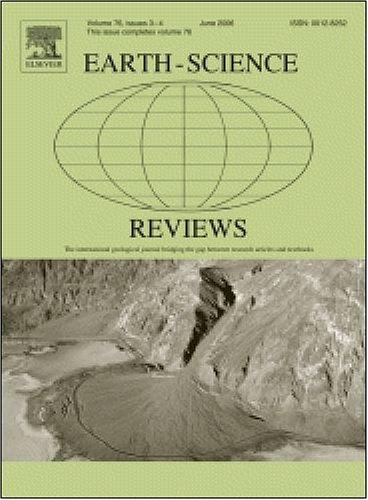A review of the granite concept through time
IF 10.8
1区 地球科学
Q1 GEOSCIENCES, MULTIDISCIPLINARY
引用次数: 0
Abstract
Granitic rocks are ubiquitous worldwide in ancient and active tectonic settings, representing powerful sources of information about the Earth's past and present geodynamic behaviour. Numerous recent milestones fostering our knowledge of granites would have not been possible without a long-lasting, sometimes controversial, discussion on their origin and significance that has taken place over the last two centuries. Here we present a chronological review of how granites have been defined and interpreted in the context of the major theories that have successively governed the history of Earth Science. The main authors, scientific approaches, interpretations, and type-localities that have influenced knowledge about granitic rocks are summarized from the 18th and 19th centuries, when Earth Science was governed by the Neptunism, Plutonism and Uniformitarianism paradigms, to the acceptance of the Plate Tectonics theory and the very end of the magmatism vs. transformism debate in the late 20th century. Some of the most influential scientific advances in Earth Science, such as the invention of the polarizing microscope and the birth of geochemistry, as well as the role of schools of thought in these successive debates, are further discussed. Moreover, we review the recent and ongoing discussions on the mechanisms of magma generation, segregation, ascent and emplacement leading to the formation of granitic batholiths, as well as the observational, analytical, experimental, and numerical modelling approaches currently used for investigating granitic rocks. The history of granite science is classified into different periods of stasis or “normal” science, which were followed by scientific revolutions triggered by a growing number of inconsistencies. Our current understanding of granitic rocks is inevitably influenced by the preceding paradigms and disputes. Consequently, gathering and valuing the chronology, historical milestones, and overall evolution of ideas and theories on what granites are is crucial for the future directions of granite research.
花岗岩概念的回顾
花岗岩在古代和活跃的构造环境中无处不在,代表了关于地球过去和现在地球动力学行为的强大信息来源。在过去的两个世纪里,如果没有对花岗岩的起源和意义进行长期的、有时是有争议的讨论,我们就不可能有许多最近的里程碑,从而加深了我们对花岗岩的认识。在这里,我们按时间顺序回顾了花岗岩是如何在先后统治地球科学史的主要理论的背景下被定义和解释的。从18世纪和19世纪,地球科学受海王星说、冥王星说和均变说范式的支配,到板块构造理论的接受,以及20世纪末岩浆论与变形论之争的结束,对影响花岗岩知识的主要作者、科学方法、解释和类型定位进行了总结。本书进一步讨论了地球科学中一些最具影响力的科学进展,如偏光显微镜的发明和地球化学的诞生,以及在这些连续辩论中思想流派的作用。此外,我们回顾了最近和正在进行的关于岩浆产生、分离、上升和侵位导致花岗质岩基形成的机制的讨论,以及目前用于研究花岗质岩石的观测、分析、实验和数值模拟方法。花岗岩科学史被划分为不同的停滞期或“正常”科学时期,随后是由越来越多的不一致引发的科学革命。我们目前对花岗质岩石的认识不可避免地受到前面的范式和争论的影响。因此,收集和评估花岗岩的年代学、历史里程碑以及关于花岗岩的思想和理论的整体演变,对花岗岩研究的未来方向至关重要。
本文章由计算机程序翻译,如有差异,请以英文原文为准。
求助全文
约1分钟内获得全文
求助全文
来源期刊

Earth-Science Reviews
地学-地球科学综合
CiteScore
21.70
自引率
5.80%
发文量
294
审稿时长
15.1 weeks
期刊介绍:
Covering a much wider field than the usual specialist journals, Earth Science Reviews publishes review articles dealing with all aspects of Earth Sciences, and is an important vehicle for allowing readers to see their particular interest related to the Earth Sciences as a whole.
 求助内容:
求助内容: 应助结果提醒方式:
应助结果提醒方式:


